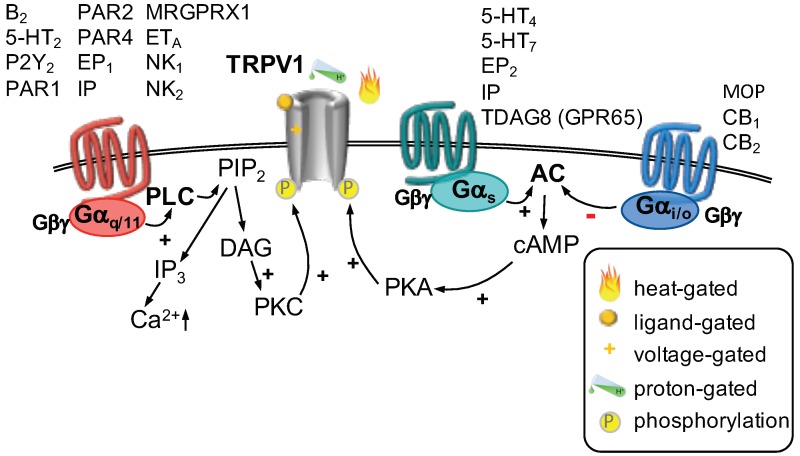Figure 1.
TRPV1 channels can be gated by different mechanisms (as indicated). Three major G-protein-dependent pathways modulate the function of TRPV1 channels. Activation of G-coupled receptors (left) leads to activation of phospholipase C (PLC), which hydrolyzes phosphatitylinositol 1,4, bisphosphate (PIP) into inositiol 1,4,5 trisphosphate (IP) and diacylglycerol (DAG). DAG activates protein kinase C (PKC), which phosphorylates TRPV1 channels, thereby increasing their function. Activation of a G-coupled receptor (center) stimulates adenylyl cyclase (AC), which produces cyclic adenosine monophosphate (cAMP). Subsequent activation of protein kinase A (PKA) leads to phosphorylation of TRPV1 channels and an increase in current. Stimulation of a G-coupled receptor (right) decreases AC activity. Therefore, less cAMP is formed, PKA is less active and hence TRPV1 channels are not phosphorylated which decreases their activity.

